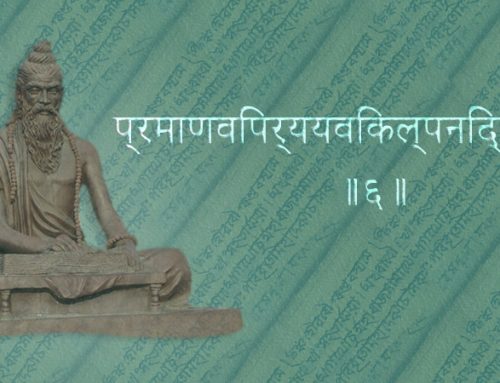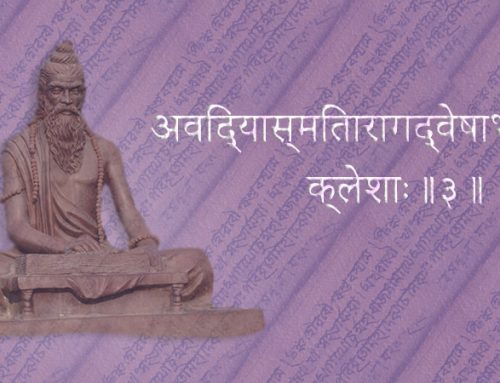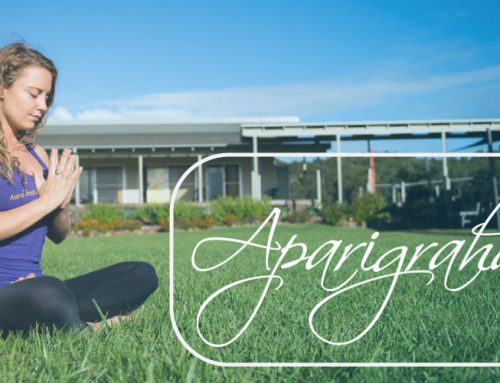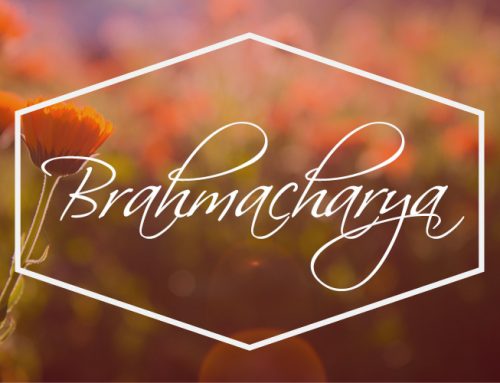
Learning to practice ahimsa or non-violence, starts on the mat with yourself and your limitations. Knowing when to slow down, rest and recuperate is the sign of an advanced yoga practice.
ahimsa pratishthayam tatsamnidhau vairatyagah
Around one who is solidly established in nonviolence, hostility disappears
Yoga Sutra 2:35
Consider these two scenarios.
Maree is a dedicated yoga student who is suffering a flare-up of a niggling knee injury. Despite this, she refuses to let anything get in the way of her morning yoga class. She continues to work strongly in her practice, pushing through the pain with deep lunging postures, and sitting doggedly, for some time, in padmasana (lotus posture). She hobbles out of class, and finds she has to dose up on strong anti-inflammatories to get through the rest of the day.
Susan, on the other hand, who has strained her shoulder joint, decides to take at least a week off her regular yoga class to give her shoulder time to rest. She practices gently at home, focusing on postures that don’t aggravate her injury, and takes advantage of this ‘rest time’ to work on the more esoteric elements of her practice: pranayama and meditation. When her shoulder is feeling better, she returns to her regular class, but still ensures that she takes it easy and never pushes into any pain in her shoulder girdle.
It doesn’t take a genius to work out which student is practicing the yogic principal of ahimsa or non-violence. Susan exhibits an inspiring level of self-compassion that forms an important component of ahimsa. It takes humility and self awareness to do this, but the rewards are great when we start to truly live our yoga.
In one of the guiding texts of yoga, The Yoga Sutras, written by the ancient sage, Patanjali, there are detailed the five yamas or ‘restraints’, or codes of conduct. Ahimsa is the first of these restraints or practices that help us create an ethical foundation for our lives.
Ahimsa is derived from two words: ‘a’, meaning ‘not’, and ‘himsa’, meaning ‘harm’. It therefore means ‘non-harming’. This concept of non-violence dovetails with the mantra, lokah samasta sukhino bhavantu , which means, in short: may all beings everywhere be happy and free. This mantra encourages us to see others through compassionate eyes, to have empathy for all beings. Once empathy is present, you are unable to do harm to the other.
We can only claim that we are truly practicing ahimsa when we are acting with love and compassion towards ourselves as well as others. The two things are interlinked, as Judith Lassiter, the well-known American yoga teacher and author says: “To recognise our own importance requires our recognising the importance of others. When we do, we treat them with respect and, therefore practice ahimsa.”
As a practice, ahimsa, and the desire to live non-violently, extends beyond our actions or words, to even our very thoughts and intentions as well. This is where the yogic and Buddhist practices of self-awareness and mindfulness can help us keep a check on unkind thoughts aimed towards ourselves or others.
So the next time you step onto your mat, perhaps you might set your intention for your practice to embody this first, key yama, and in so doing, create the grounding for a more compassionate practice. Be open to noticing how, over time, this intentional quality of gentleness might then filter into other areas of your life, leaving your self and others, no choice but to soften and yield under the clear light of ahimsa.
References
The Essence of Yoga: Reflections on the Yoga Sutras of Patanjali, Bernard Bouanchaud
Living your yoga: Finding the Spiritual in Everyday Life, Judith Lasater
Animal Mukti, Sharon Gannon and David Life.




